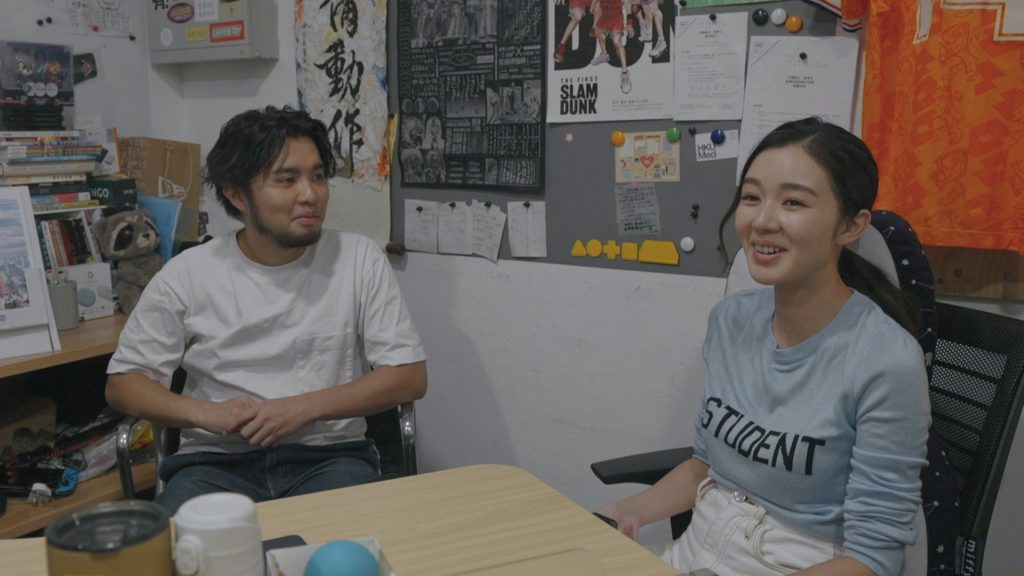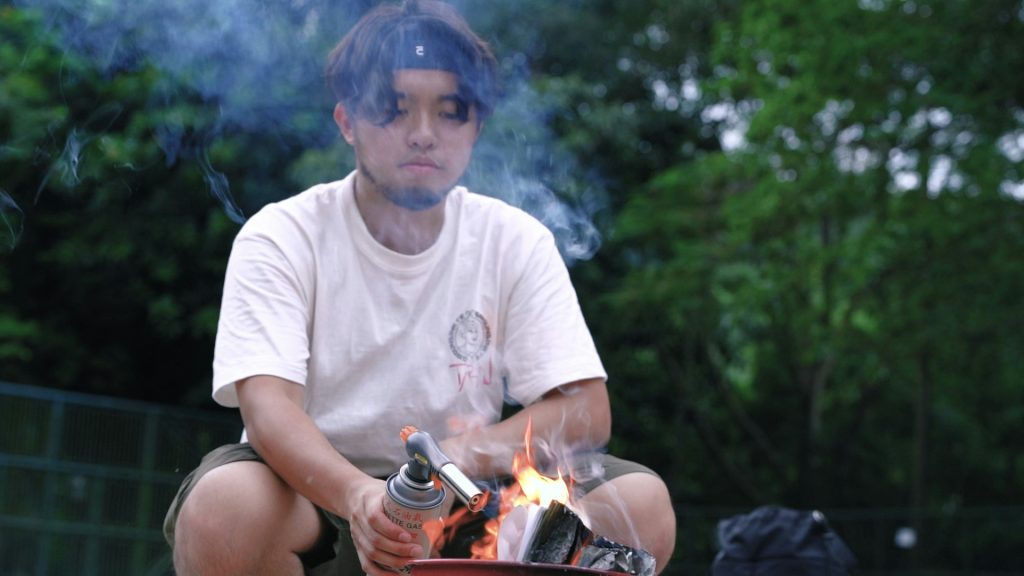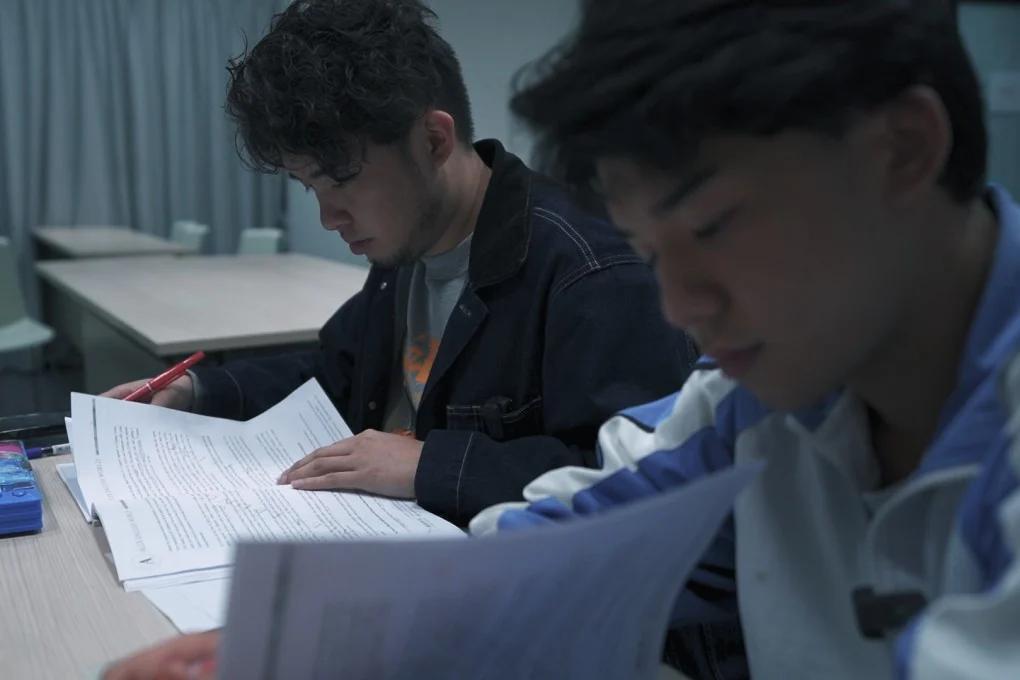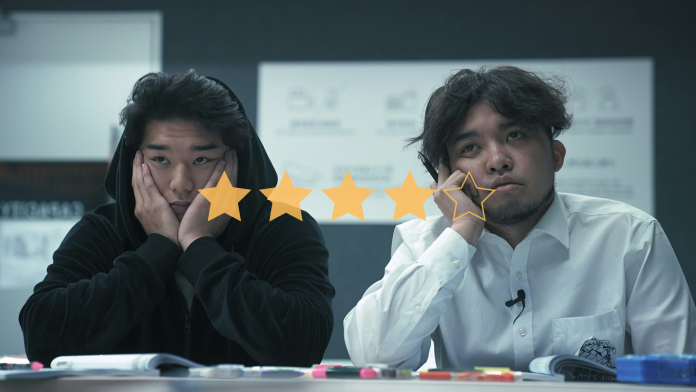Once upon a time, a 31-year-old YouTuber decided to take the university entrance exam again. He did this with a student candidate who had barely studied before. Their tough journey is documented in Once Upon a Time in HKDSE, a sensitive documentary exploring the Hong Kong education system, childhood trauma, and the meaning of cinematic art.
★★★★☆
Once Upon a Time in HKDSE takes place over eight months, and chronicles 17-year-old Hong’s preparations for the Hong Kong university entrance exam, HKDSE. Hong has barely studied before, and prepares for the exam alongside 31-year-old Yin. When the filming began, Hong was predicted to score the lowest grades. Can he ace the exam in just four months?
Initially released as a series by local YouTube channel ‘Trial and Error’ in 2023, the seven episodes have this year been re-edited into a feature documentary.The film is primarily about Hong Kong’s examination system. Thanks to British colonial rule, Hong Kong once adopted the GCSE and A Level model. The two exams were replaced by the Hong Kong Diploma of Secondary Education (HKDSE) in 2012, a one-off public exam students take after they finish their six-year secondary education. Consisting of mandatory subjects like mathematics and English alongside electives, the exam allows students to gain admission to local universities.
The documentary comprehensively critiques the HKDSE system. Unlike BTEC or A Levels, HKDSE is the only qualification for secondary school pupils. This wholly academic approach, where students must study subjects they cannot master, has been widely criticised as unjustly assessing all students regardless of their talents.

While the documentary illuminates this criticism through Hong’s story, it illustrates how the exam can contribute to students’ self-growth. As the crew pushes Hong to study, he discerns his lack of perseverance and motivation. He gradually grows to be self-disciplined and resilient, pushing his limit to study round the clock and trying his best regardless of the result.
The documentary successfully resonates with local audiences’ common memory of the cruel exam. Yet, those who do not grow up in such an exam-oriented environment may find it difficult to relate themselves to Hong’s and other Hong Kong students’ struggles. The locality of the documentary may hinder the film from going global, but it is a must-watch for everyone interested in learning about Hong Kong or Southeast Asian education.
While the documentary witnesses Hong’s growth, it heals Yin’s childhood trauma. He prepares for the exam without the pressure of having to get into a university, allowing him to revisit his childhood and reflect on how he was traumatised by the exam. One of the highlights of the film is the touching conversation between Yin and his mum, who holds back her tears confessing the regret of forcing her son to give up table tennis for academic study. Later on in the film, Yin disentangles himself from the childhood scar by burning all the revision notes. It proves the beautiful healing power of cinematic art.

Once Upon a Time in HKDSE is also technically interesting, and raises the question of what can be categorised as a ‘film’. It was initially a YouTube series, and its director, Yik Ho Leung, was a journalist before and it is his very first movie. The channel invited William Chang, one of the most decorated film editors in Hong Kong, to re-edit the series into a film. As a making-of video shows, it is not easy to turn a video for phone screens into a cinematic experience. The production team had to clean up the audio and adjust the frame rate, and clips of Hong’s revision are shortened and compressed into a montage. To engage a wider audience, the team removed the parts involving their inside jokes too.
While YouTube videos and films have different technical requirements, Once Upon a Time in HKDSE proves how they can be merged to create beautiful work. After the interviewing scenes are enlarged to the appropriate frame rate, the interviewees’ facial expressions are amplified and the film is more emotional. The initial concept of creating a YouTube video makes the filming more casual; when the crew visits Hong’s school, Yin asks students to sign on his school uniform-like shirt as a consent form for filming. It speeds up the administrative procedure and, more importantly, closes the gap between the crew and the students. Such an authentic and relaxing vibe is less likely to be seen in high-budget documentaries filmed with invasive professional cameras.

Once upon a time, a good movie was defined as an artistic video made by a ‘professional’ director with a high technical standard. Such academism has been challenged by the rise of online streaming platforms, evidenced by the global shock when Netflix movies were first nominated for an Academy Award in 2014. Although forms of movies have diversified in recent years, YouTube videos are usually seen as indelicate, inferior to films and unartistic entertaining. Yet, platforms like YouTube offer precious opportunities for young filmmakers to practice with more efficient and flexible production. Once Upon a Time in HKDSE is an experiment of combining the seemingly divergent forms of films and YouTube videos, removing the rigid line between ‘high’ and ‘low’ cinematic art. In doing so, it allows creatives with different backgrounds to learn from one another and produce more interesting and fulfilling pieces.
“The happiest people are those without a story to tell,” Yin says at the end of the documentary. Once Upon a Time in HKDSE is a gentle movie telling the painful story of Hong Kong students. It is local, but it reminds the globe that art can be healing and takes many forms.
The Verdict
Once Upon a Time in HKDSE is a stimulating documentary critiquing the exam-oriented education of Hong Kong and Southeast Asia and challenging the meaning of cinematic art. It is a small local production, but it is worth a theatre viewing for the world.
Word by Angel Sun
Support The Indiependent
We’re trying to raise £200 a month to help cover our operational costs. This includes our ‘Writer of the Month’ awards, where we recognise the amazing work produced by our contributor team. If you’ve enjoyed reading our site, we’d appreciate it if you could donate to The Indiependent. Whether you can give £1 or £10, you’d be making a huge difference to our small team.
